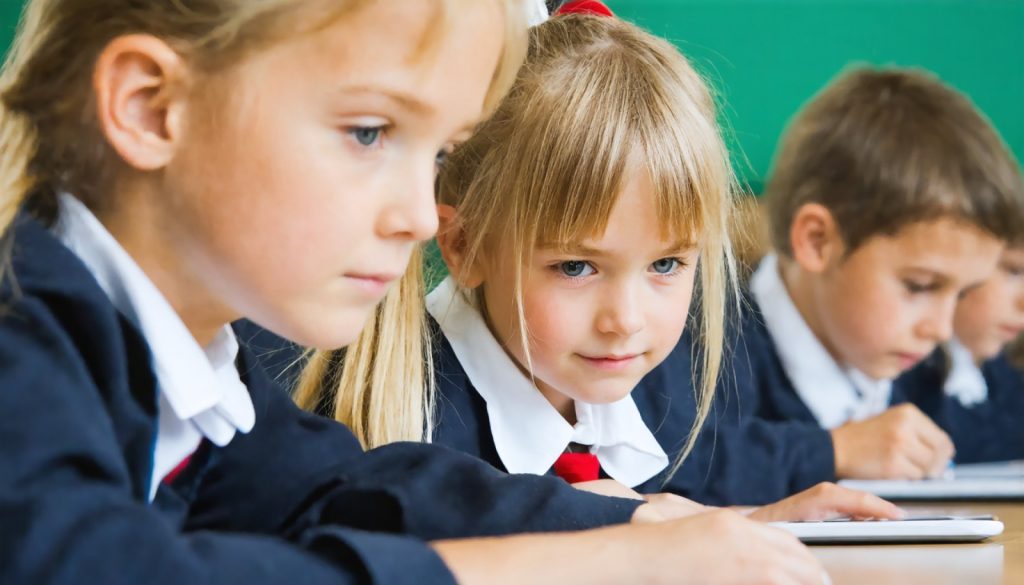
- Denmark bans mobile phones in primary and secondary schools to reduce digital distractions and enhance learning.
- Students engage more in face-to-face interactions, rediscovering direct conversation and real-world connections.
- Denmark’s policy aligns with global movements addressing smartphone addiction’s impact on mental health and cognition.
- Families set digital boundaries at home, promoting healthier interactions and resilience in young people.
- Danish educators observe improved focus and classroom dynamics post-ban.
- The initiative inspires worldwide interest in redefining technology’s role in education.
- Balance between digital literacy and limiting connectivity is crucial for student development.
- Unified, collaborative policies with practical solutions foster successful transitions.
As cherry blossoms burst into life across Denmark in April 2025, a quieter, yet equally transformative change sweeps through the nation’s schools. A bold experiment unfolds as the government implements a sweeping ban on mobile phones in primary and secondary education. This initiative raises questions about how reducing digital distractions might reshape learning, and it’s not just interesting—it’s enlightening.
Imagine vibrant schoolyards echoing with the sounds of students playing and chatting, rather than the silent tapping of fingers on screens. Without the perpetual pull of notifications, Danish students are rediscovering the art of direct conversation, building a tangible connection with the world around them. As spring breathes new life into nature, so too do these students reawaken to the benefits of uninterrupted reality.
The decision to banish screens from schools didn’t emerge from a vacuum. Echoing movements in places like France, Denmark’s leaders responded to mounting evidence that smartphone addiction affects mental health and cognitive development. Education Minister Mattias Tesfaye underscores a pressing need: reclaiming schools as sanctuaries for reflection and growth, rather than nodal points in a digital web.
The metamorphosis touches not just students, but the broader fabric of Danish society. At home, families wrestle with technology’s pervasive presence, probing how social media can shape emotions and behavior. Parents, witnessing this communal effort, begin establishing digital boundaries that encourage healthier interactions—a move psychologists applaud for building resilience among young people.
Danish educators report dynamic shifts in classroom atmospheres. Minds once fragmented by digital bloat now appear more capable of sustaining focus. While some educators bristle at this government-mandated homogeny—arguing for existing school-level autonomy—the central edict fosters a unified approach to tackling digital dependence.
Meanwhile, the policy reverberates internationally. Observers like Icelandic Minister Ásthildur Lóa Þórsdóttir study Denmark’s blueprint, curious about its implications for future education models. Could this Scandinavian initiative inspire a reevaluation of technology’s role in academic spaces worldwide?
The shift isn’t about demonizing technology but recalibrating its influence. Schools strive to maintain digital literacy while guarding against the narcosis of constant connectivity. Designing thoughtful frameworks that balance these needs, Danish educators aim to cultivate an environment where young minds can thrive both online and offline.
As Denmark’s educational revolution continues, its lessons become globally resonant:
– Unified policies are more effective than fragmented ones
– Collaborative development promotes acceptance among stakeholders
– Practical solutions like device storage facilities support smooth transitions
– Ongoing evaluations refine strategies over time
The journey towards a more balanced technological relationship is ongoing, and while the seeds of change planted this spring have yet to mature fully, the early blossoms suggest rich rewards. When the clamor of digital distraction dims, students discover not only the world beyond the screen but also the potential within themselves.
Denmark’s Bold Move: The Impact of Banning Phones in Schools and What It Means Globally
Exploring the Impact of Denmark’s School Phone Ban
In 2025, Denmark initiated a transformative policy by banning mobile phones in primary and secondary schools. This decision, sparked by concerns about smartphone addiction, mirrors similar movements across Europe and aims to improve students’ focus, mental health, and social interactions.
Key Benefits of the Phone Ban in Schools
1. Enhanced Focus and Cognitive Development:
– Removing phones from the classroom reduces distractions, helping students concentrate better and improving academic performance. Cognitive load theory suggests uninterrupted attention fosters deeper learning (Sweller, 1994).
2. Improved Social Skills:
– Without phones, students engage more in face-to-face interactions, essential for developing empathy, communication skills, and emotional intelligence (Giedd, 2012).
3. Healthier Mental State:
– Decreased screen time is linked to reduced anxiety and depression levels in teenagers. A study by Twenge and Campbell (2018) highlights the correlation between excessive screen exposure and increased mental health issues in adolescents.
Implementing the Ban: How Schools Adapt
– Device Storage Solutions: Schools offer storage facilities for phones during school hours, ensuring a smooth adaptation for students and teachers.
– Policy Framework: Clear guidelines and policies are crucial for effective enforcement and to garner support from educators and parents.
Global Implications and Considerations
Denmark’s initiative prompts discussions on a global scale, challenging traditional perceptions of technology’s role in education. Countries are watching to see if this model can be effectively translated across different educational systems.
Potential Challenges and Controversies
– Teacher Autonomy: Some educational experts argue that a one-size-fits-all approach may not address the unique needs of individual schools, advocating for more autonomy.
– Technological Literacy: Balancing the ban with the need to develop digital literacy skills remains a critical focus. Ensuring students are adept at using technology constructively outside school is essential.
Real-World Use Cases and Predictions
– Schools worldwide may adopt similar policies, especially if Denmark shows measurable improvements in academic and social outcomes.
– The movement could inspire reforms focusing on digital wellness education, teaching students how to use technology responsibly.
Tips for Parents and Educators
– Establish Digital Boundaries: Encourage screen-free times at home to nurture healthier tech habits.
– Promote Face-to-Face Interaction: Organize activities that emphasize teamwork and interpersonal communication.
Conclusion: A Balanced Technological Relationship
Denmark’s school phone ban illustrates the potential benefits of reducing digital distractions in educational environments. As schools globally consider similar measures, the focus should remain on fostering environments where students can thrive both online and offline. This progression towards a balanced relationship with technology could reshape educational practices worldwide, making it a topic of significant interest for educators, policymakers, and parents alike.
For more insights on educational trends and technology, visit Educational Trends.
References:
– Sweller, J. (1994). Cognitive Load Theory, Learning Difficulty, and Instructional Design.
– Giedd, J.N. (2012). The Digital Revolution and Adolescent Brain Evolution.
– Twenge, J., & Campbell, W.K. (2018). Associations Between Screen Time and Lower Psychological Well-Being Among Children and Adolescents: Evidence From a Population-Based Study.



